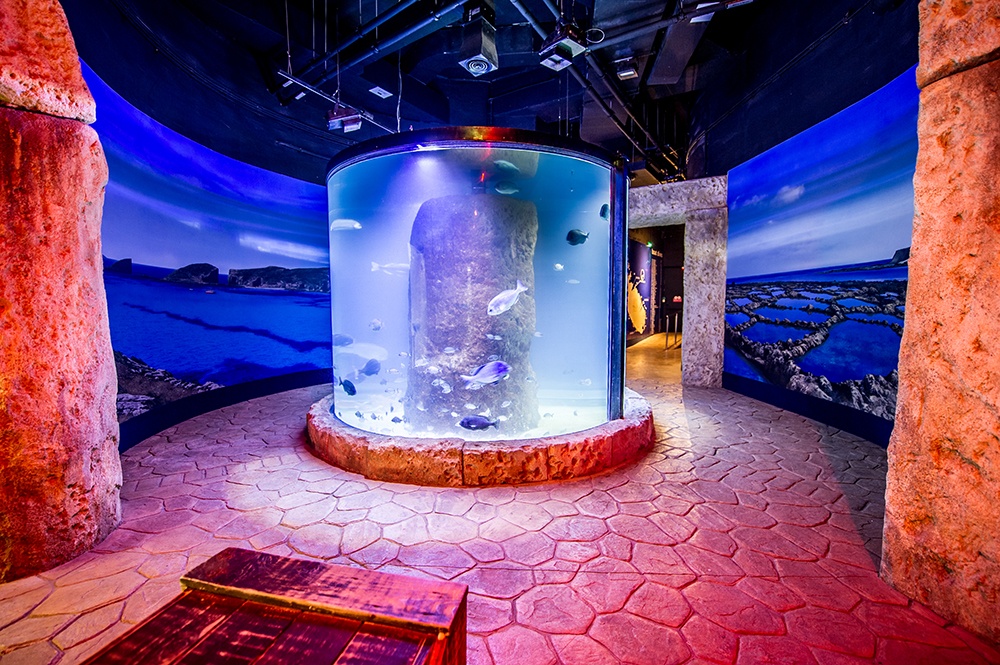What you can learn About Home Aquarium by Visiting Malta Aquariums
Home aquariums offer households restful and beautiful entertainment. They also offer children a great means to learn about ecosystems. Regardless of their benefits, they require some work and careful planning. Before setting up one, you should decide on whether you can give the water creatures the care, patience, and time that they need.
A visit to the library, bookstore or a relevant online resource can offer you the basic knowledge on how to set up a home aquarium. Visiting the Malta National Aquarium can also help you learn more about aquariums. Discussed below are some of the lessons you can learn from the public aquarium.

1. Saltwater Tanks
Most novice aquarists prefer freshwater tanks over saltwater ones since they’re easier to maintain. The Malta National Aquarium features a saltwater tank with exotic saltwater fish. A trip to the facility can help you realize that saltwater tanks have unique challenges. They require much more upkeep.
2. Food and Supplements
Diet is among the essential elements for ensuring your aquarium has healthy fish. A visit to The Malta National Aquarium helps you discover that there are different options when it comes to your fish’s diet. You’ll also learn how to rotate fish food periodically by including vitamin boosters or supplements for added nutrition. With the right food/supplements and feeding routine, your fish will receive all the nutrients they need to remain active.
3. Health Control
At one time or another, your fish may fall sick. Though it’s normal to feel helpless when such a situation occurs, you can adopt a number of ways to treat your sick fish at your own home. Note that most of the treatments depend on the specific ailment.
According to experts at the Malta National Aquarium, getting a “quarantine tank” can help separate sick fish from the healthy ones. Separating the sick fish enables you to speed up the healing process. Such a strategy also helps reduce the risk of spreading the illness to other fish.
4. Fish Compatibility
You need to choose fish that can coexist peacefully in similar water conditions. Consider consulting a knowledgeable aquarist to ensure that the water creatures in your tank are compatible. A trip to the Malta Aquarium helps you learn how to avoid fish with sunken stomachs, wounds, cloudy eyes and clipped fins when shopping for fish. Note that these can all be clear signs of disease.
5. Aquarium Placement
Fish reared in the Malta National Aquarium manage to live healthily because of the water temperatures. On average, your home aquarium should have water temperatures ranging from 73 to 82 degrees Fahrenheit. You should always install the home aquarium a safe distance from windows. Such a strategy prevents sunlight from causing green algae to grow in the tank.
You should have an aquarium filter that can clean the tank at least three times every hour. Failing to clean the tank may expose your fish to disease-causing microorganisms. You also need to test the pH, ammonia and nitrogen levels often.
6. Type and Amount of Water to Use
One of the reasons why the Malta Aquariums have healthy-looking fish is because their tanks accommodate high-quality treated water. Be sure to have at least a gallon of water in your home aquarium for the survival of your fish. You should also use a de-chlorinator to remove chlorine when placing tap water into a freshwater aquarium.
7. Aquarium Maintenance
Home aquariums can induce stress when you fail to maintain them as required. The Malta Aquariums usually attract thousands of local and international tourists because of their properly-maintained tanks. You can service your home aquarium by feeding the fish regularly, cycling the tank, managing the filtration system, performing a periodic partial water change and vacuuming the gravel. If the upkeep is too much to handle, consider enlisting the services of a professional aquarium maintenance company.
8. Filtration Equipment
One of the most difficult but important choices you’ll have to make as a home aquarium owner is to choose the right filtration equipment. Visiting the Malta Aquariums help you discover that aquarium filters work in three different ways. With chemical filtration, the filters usually remove dissolved wastes that a mechanical filter can’t. The filter media chemically attaches itself to the waste molecules when water passes through it and removes them from the aquarium.
Mechanical filters remove objects such as uneaten food, fish excrement, dust or sludge from the aquarium. For them to work, tank water must pass through a mechanical filter media. You’ll need to regularly clean the filter media to prevent waste build-up. With biological filtration, the filters rely on the natural bacterial process involved in the nitrogen cycle.
9. Aquarium Lighting
The Malta Aquariums have adequate and effective lighting in place to ensure that the marine creatures gain the light needed for photosynthesis. The lighting also makes the aquarium and the animals look more attractive to the tourists. Providing the proper spectrum and intensity of light is vital for the health of your fish since they will no longer have direct access to natural sunlight. In this case, consider investing in energy efficient and aquarium-friendly lighting systems.
By sticking to simple rules discussed above, you can have your aquarium up and running smoothly in 6 to 8 weeks. Note that larger tanks are easier to regulate since they can accommodate a broader variety of species. Regardless of the size of tank you use, always ensure that it can offer a better and more convenient environment for your water creatures.


